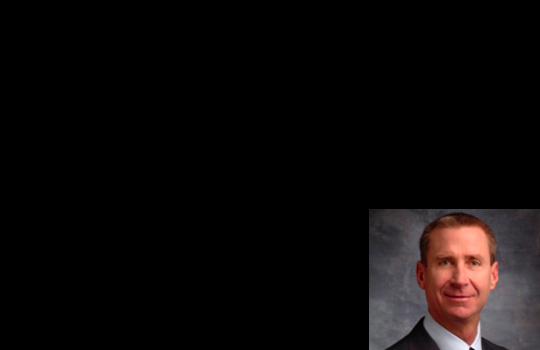If the world had been a different place, Doug Dennerline might never have been at SuccessFactors – he was certainly reluctant at first even to meet up with the firm's larger than life CEO Lars Dalgaard thanks to an earlier career move.
“I had a small stint at Salesforce.com,” explains Dennerline. “I had been eleven years at Cisco during which time we looked at buying either Salesforce.com or Webex. In the event we didn't want to go down the sales apps path, the collaboration layer was more in line with our business. So we bought Webex and I ran that for a couple of years which is how I got into SaaS.
“One of the guys I worked with at Cisco was Marc Benioff. My sales team was actually one of Salesforce.com's first big customers. Benioff recruited me to Salesforce.com to run the enterprise sales team which I viewed as being number two, but there as a mismatch of expectations so I took some time off. I got a call to go and talk to Lars Dalgaard, but view was 'no, been there, done that'. Lars and Marc have a lot of similar qualities. Lars is very human and very passionate.”
Eventually Dennerline was persuaded he ought to meet with the great Dane and found himself signing up to become SuccessFactors president – and this time most definitely number two in the organisations. “I'm 'Lars in the building',” he explains. “I'm the ops guy. One of the sales team told me that I'm the ying to Lars yang.”
This could prove to be a very smart move on the part of SuccessFactors. Most of the great IT companies are based on this ying/yang principle. Think about Steve Jobs and Steve Wosniak at Apple, Larry Ellison and Bob Miner in the early days of Oracle, Microsoft's Bill Gates and Paul Allen and more recently perhaps Marc Benioff and Parker Harris at Salesforce.com. If you've got a charismatic leader a la Ellison, Benioff or Dalgaard out there, it's often a good idea to have a solid ops guy riding alongside.
Bridging the gap
For Dennerline, SuccessFactors might seem like an unexpected career stop. His background isn't in HR – the foundation audience for SuccessFactors over the year – but resolutely in IT. That said SuccessFactors BizX messaging has been squarely targeted at the CIO. So is Dennerline the bridge between the two worlds?
“We are trying to bridge the gap between HR and the C-suite,” confirms Dennerline. “I spent 15 years watching IT organisations grow inside organisations. They used to be stuck down in the basement, but when you roll the clock forward to today you find them reporting in to the C-suite. There isn't a person today in the world who doesn't think that technology transforms the organisation. HR is in the same place now. In the greatest companies, the CIO today is a business person, not a geek. Similarly HR people are turning from HR to business.”
OK, but in order to bridge that gap between HR and IT there needs to be a willingness to do so on the part of both sides and HR's track record on this front could be charitably described as not-enthused when it comes to engaging with technology. Dennerline suggests it's not the technology that unites the two camps, but a shared interest in data. “It's not about technology, it's about people performance,” he argues. “HR people are dying to get access to employee data, but they haven't had access to it yet. But you can tell where HR sites in an organisation by who the HR directors reports to. A CEO who doesn't value HR shouldn't be a CEO.”
Boring HR
With his hi-tech sales background, Dennerline provides an interesting assessment of the market landscape which appears to see SuccessFactors facing up to competitive pressure from Cloud pureplays such as Workday as well as traditional HCM providers such as SAP and Oracle, both of which have their own Cloud ambitions. But Dennerline is phlegmatic about the challenges such rivals present.
“There's a really boring side of HR which is the finance and data side. Workday will say 'we are PeopleSoft at a third of the price'. That's dull. Who wants to be that?,” he says while arguing that SAP and Oracle are many years behind in the market. “Transformations take time. There's a pace of innovation that they can't keep pace with. We are lightweight and we have ten years of innovation ahead of them.
“People have to want to engage with systems so you have to make them as intuitive as possible. We want it to be toy-like. All the kids who are coming into the workplace are used to using YouTube and so on. You have kids who have all this experience with Apples and iPhones and then you show them Oracle 10! Then you show them Oracle from ten years ago and it's same screen shot!!! There's a long term transition going on. Bringing Oracle in and then customising the crap out of it isn't helping your business.”





